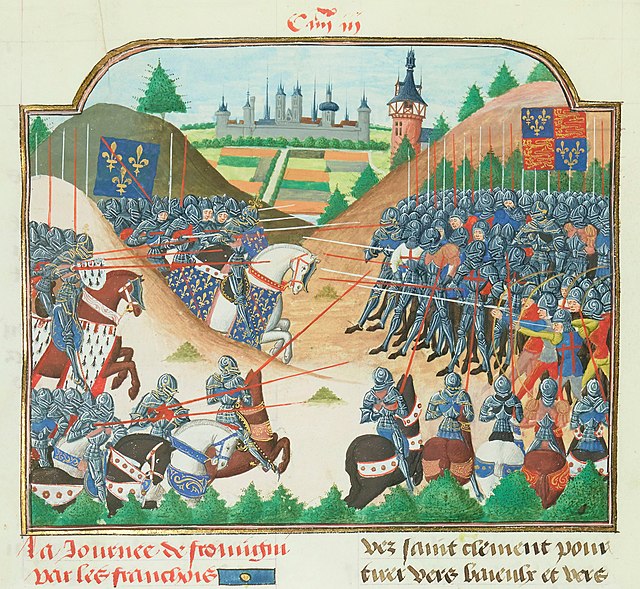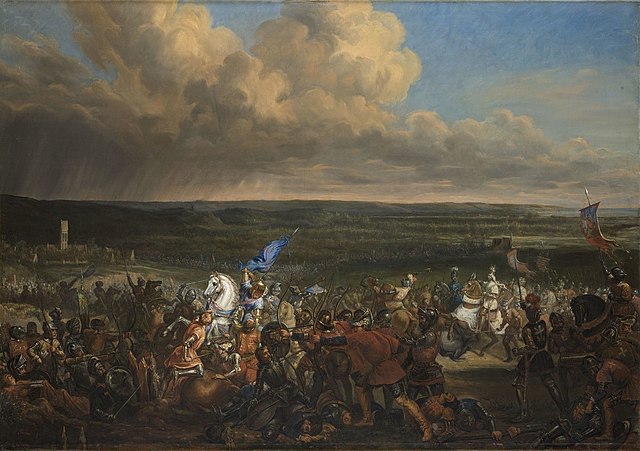The Battle of Formigny, fought on 15 April 1450, was a major battle of the Hundred Years' War between England and France. A decisive French victory that destroyed the last significant English field army in Normandy, it paved the way for the capture of their remaining strongholds.
Illumination adorning La Cronicque du temps de Tres Chrestien Roy Charles, septisme de ce nom, roy de France by Jean Chartier, c. 1470–1479
The Battle of Formigny from Les Vigiles de Charles VII by Martial d'Auvergne, 1484
Bataille de Formigny, oil on canvas by Rémy-Eugène Julien
A Memorial marks the Battlefield
The Hundred Years' War was a series of armed conflicts fought between the kingdoms of England and France during the Late Middle Ages. It originated from English claims to the French throne initially made by Edward III of England. The war grew into a broader military, economic, and political struggle involving factions from across Western Europe, fueled by emerging nationalism on both sides. The periodization of the war typically charts it as taking place over 116 years. However, it was an intermittent conflict which was frequently interrupted by external factors, such as the Black Death, and several years of truces.
Clockwise, from top left: the Battle of La Rochelle, the Battle of Agincourt, the Battle of Patay, and Joan of Arc at the Siege of Orléans
Homage of Edward I of England (kneeling) to Philip IV of France (seated), 1286. As Duke of Aquitaine, Edward was also a vassal to the French King (illumination by Jean Fouquet from the Grandes Chroniques de France in the Bibliothèque Nationale de France, Paris).
The Battle of Sluys from a BNF manuscript of Froissart's Chronicles, Bruges, c. 1470.
Battle of Crécy, 1346, from the Grandes Chroniques de France. British Library, London








